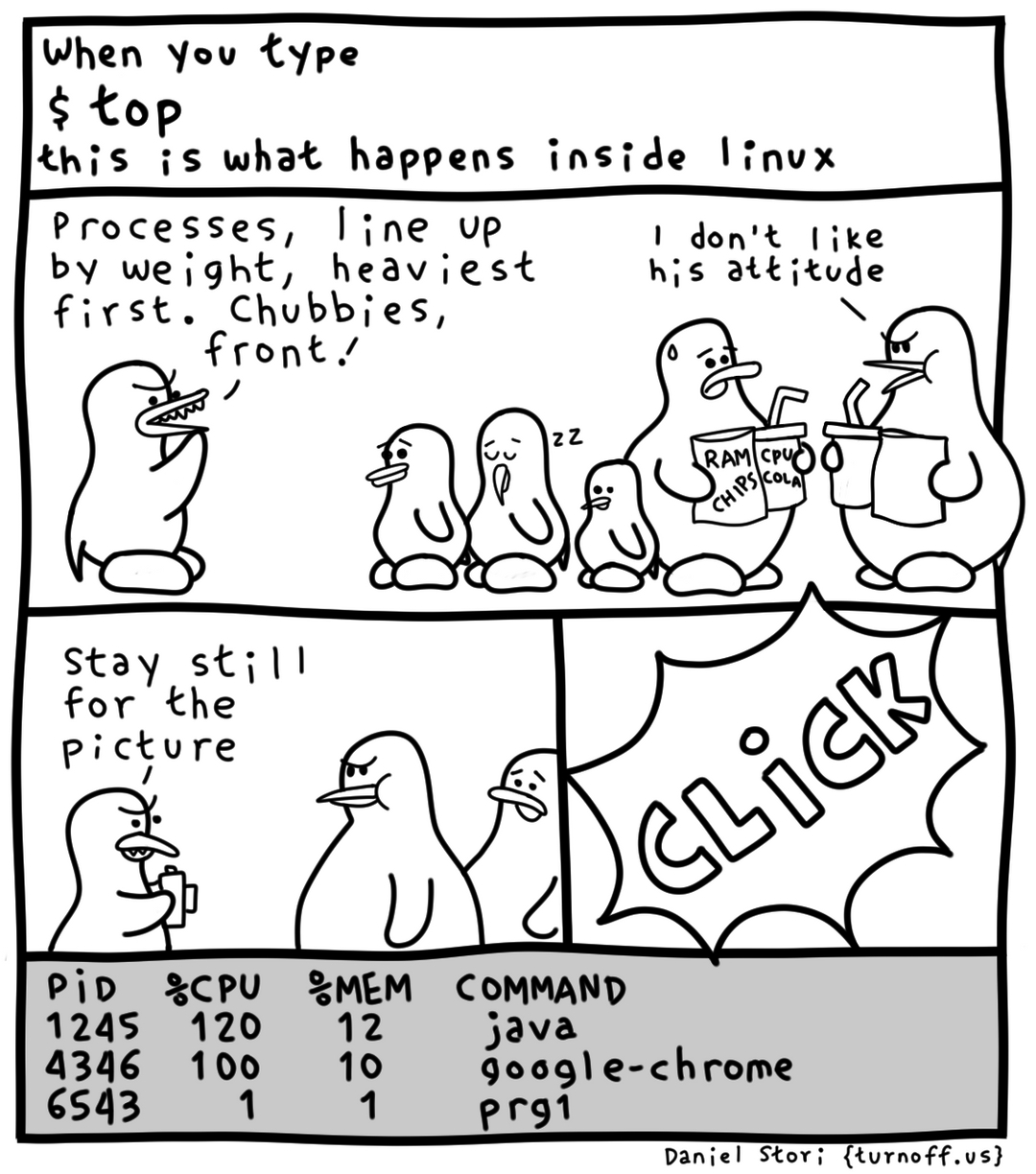this post was submitted on 16 Feb 2024
995 points (99.3% liked)
linuxmemes
20880 readers
9 users here now
I use Arch btw
Sister communities:
- LemmyMemes: Memes
- LemmyShitpost: Anything and everything goes.
- RISA: Star Trek memes and shitposts
Community rules
- Follow the site-wide rules and code of conduct
- Be civil
- Post Linux-related content
- No recent reposts
Please report posts and comments that break these rules!
founded 1 year ago
MODERATORS
you are viewing a single comment's thread
view the rest of the comments
view the rest of the comments

Hmm. It's been a hot minute (ok 30 years) since I learned about this stuff and I don't know how it works in Linux in excruciating detail. Just the general idea.
So I would be curious to know if I am off base.. but I would guess that, since the kernel is in charge of memory allocation, memory mapping, shared libraries, shared memory, and virtualization, that it simply keeps track of all the associated info.
Info includes the virtual memory pages it allocates to a process, which of those pages is mapped to physical memory vs swap, the working set size, mapping of shared memory into process virtual memory, and the memory the kernel has reserved for shared libraries.
I don't think it is necessary to find out how much is "technically in use" by a process. That seems philosophical.
The job of the OS is all just resource management and whether the systems available physical memory is used up or not. Because if the system spends too much time swapping memory pages in and out, it slows down everything. Shared memory is accounted for correctly in managing all that.
Maybe I am not understanding your point, but the file system is a different resource than memory so a file system cache (like a browser used) has zero impact on or relevance to memory usage as far as resource management goes.